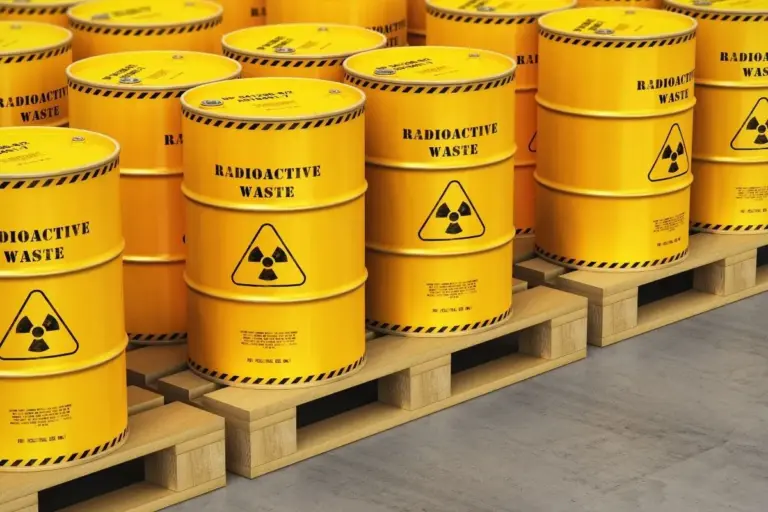Advertisements
THE gum, although popular and widely consumed, poses a major environmental challenge due to its non-biodegradable nature. Composed of gum base, sugar, dyes and other ingredients, chewing gum can take up to 5 years to completely decompose. However, the good news is that recycling gum Not only is it possible, it can also bring significant environmental benefits. In this post, we will explore the potential of recycling this product and the ways in which you can contribute to a more sustainable planet.

The Environmental Impact of Chewing Gum
Each year, billions of units of gum are consumed all over the world, which generates a huge amount of waste. Brazil, being the second largest producer of chewing gum, behind only the United States, faces a serious problem with the improper disposal of this material. When thrown on the ground or in public areas, chewing gum sticks to surfaces such as sidewalks, walls and even trees, creating a significant challenge for urban cleaning.
In addition to cleaning problems, chewing gum can directly affect the environment. Because it is made of synthetic and non-biodegradable materials, such as gum base, it pollutes soil and bodies of water, contributing to the contamination of ecosystems. Gum thrown on the streets can end up in rivers and oceans, being ingested by marine animals that mistake the material for food.

The Composition of Chewing Gum and Its Recyclable Potential
THE gum is composed of a series of ingredients that make its recycling possible, but are not very well known. gum base, the main component of chewing gum, is a mixture of synthetic rubbers and calcium carbonate, as well as other compounds that give it a soft texture and elasticity during chewing. Other ingredients include sugars, colorings, flavorings and soy lecithin, which act as emulsifiers.
An innovative project developed by three students from the Dr. Adail Nunes da Silva Technical School, in Taquaritinga (SP), presented a solution to this problem. During the 10th Paula Souza Center Technology Fair, they showed that it is possible to extract compounds from chewed gum and reuse them as raw materials in new products. This project has great potential to change the way we deal with the disposal of this waste.

Chewing Gum Recycling Processes
The recycling process of gum involves the separation of its main components, such as rubber, sugar, calcium carbonate and soy lecithin. Each of these ingredients can be reused in different industrial sectors.
- Rubber: The rubber extracted from chewing gum can be transformed into a waterproof film, ideal for use as a sealant in construction. The greater the amount of chewing gum used in the process, the more resistant the film created becomes.
- Calcium carbonate: Present in the composition of chewing gum, this material can be used to make quicklime, plaster and even serve as a base for paints.
- Soy lecithin: Another recyclable component of chewing gum is soy lecithin, which can be used to produce liquid soap. This soap, like those made at home from oil or fat, has cleaning properties and foams.
- Sugar: Even after chewing gum, there is still a small amount of sugar left. When sugar is extracted from several pieces of gum, it can be used to produce alcohol.
These processes show that, despite appearing to be an insignificant residue, the gum has great potential for reuse. However, the biggest challenge lies in the lack of studies and lack of knowledge about the components of the gum base, due to commercial issues. Even so, innovation is possible, and the gum can become an important raw material for new products.

Challenges of Recycling Chewing Gum
Despite innovative solutions, recycling of gum still faces many challenges. The main barrier is the lack of knowledge and awareness about the potential of this material. Since chewing gum is a low-cost and widely consumed product, people tend to dispose of it inappropriately, without thinking about the environmental consequences.
Additionally, cities spend millions of dollars each year on street cleaning services to remove gum stuck to sidewalks and other surfaces. This removal process is laborious and often ineffective, as gum adheres firmly to the pavement and requires the use of chemicals to remove.
Another challenge is the lack of selective collection programs or initiatives that encourage recycling. chewing gum. Unlike materials such as paper, plastic and glass, chewing gum is not seen as something recyclable by the general public, which makes it difficult to create a sustainable chain for its reuse.
Projects and Initiatives for Chewing Gum Recycling
Despite the difficulties, initiatives such as the project developed at the Dr. Adail Nunes da Silva Technical School show that recycling gum It’s feasible. These students have managed to turn chewed gum into useful products, such as waterproof sealants and liquid soap, proving that it is possible to give new life to this waste.
Another international example comes from England, where an innovative project called “Gumdrop” created small trash cans in the shape of chewing gum to encourage the correct disposal of this material. The chewing gum deposited in these bins is recycled to produce new objects, such as cell phone cases and flip-flops.
These initiatives are fundamental to changing the way we see gum and encourage more sustainable practices. For chewing gum recycling to be widely adopted, it needs the support of public policies, environmental education programs and partnerships between companies and governments.
Conclusion: Recycling Gum Is Possible and Necessary
A gum recycling is a possible solution for one of the most common and problematic wastes in the world. With technological innovations and environmental awareness, we can transform a polluting material into useful resources for society.
Although the gum takes up to 5 years to decompose, it can be recycled and transformed into new products, contributing to the reduction of waste and the preservation of the environment. However, this transformation will only be possible with public awareness and support for innovative initiatives.
So the next time you consume one, gum, think twice before disposing of it inappropriately. Look for appropriate bins or participate in recycling programs, when available. Small actions can make a big difference in combating pollution and promoting a more sustainable future.
Recycle, rethink and contribute to a world where even the gum can be part of the environmental solution.
Check out other interesting facts about recycling clicking here.
Learn how to make art by recycling, Click here.
Summary



